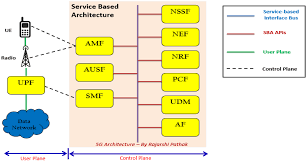VRF (Virtual Routing and Forwarding): Concept, Benefits, and Applications
telcomatraining.com – In the world of networking, Virtual Routing and Forwarding (VRF) plays a crucial role in ensuring efficient traffic segmentation and security. VRF technology enables a single physical router to function as multiple virtual routers, allowing network administrators to separate and manage different networks without requiring additional hardware. This article explores the concept of VRF, its benefits, and its applications in modern networking.
What is VRF?
Virtual Routing and Forwarding (VRF) is a technology that enables multiple routing tables to coexist within a single router or Layer 3 switch. Each VRF instance operates independently, ensuring that data from different networks remains isolated. This capability is essential for enterprises, service providers, and data centers that need to segregate network traffic for security, performance, or organizational purposes.
VRF works by assigning unique routing table instances to different interfaces or customers, ensuring that traffic from one VRF cannot interfere with another. This makes VRF an essential component of Multi-Protocol Label Switching (MPLS) networks and other virtualized network infrastructures.
Benefits of VRF
1. Network Segmentation and Security
One of the primary benefits of VRF is its ability to provide secure network segmentation. By isolating routing tables, VRF ensures that traffic from different departments, customers, or applications does not mix. This prevents unauthorized access and enhances security, making it ideal for enterprises handling sensitive data.
2. Efficient Resource Utilization
VRF allows multiple virtual networks to run on the same physical infrastructure, reducing the need for additional routers or hardware. This results in cost savings and improved resource allocation, especially for large organizations or service providers managing multiple clients.
3. Simplified Network Management
With VRF, administrators can manage different network segments independently while maintaining centralized control. This simplifies network troubleshooting, policy enforcement, and configuration management. It also improves scalability, making it easier to expand network services without major infrastructure changes.
4. Support for Multi-Tenant Environments
In cloud computing and managed service environments, VRF is essential for creating separate routing domains for different customers or tenants. This enables service providers to offer isolated and secure network services to multiple clients without compromising performance or security.
5. Enhanced Quality of Service (QoS)
By separating traffic into different VRF instances, organizations can prioritize specific applications or services. For example, a company can allocate more bandwidth to voice or video applications while limiting less critical traffic. This ensures better performance and user experience.
Applications of VRF
1. Enterprise Networks
Enterprises use VRF to separate different business units, departments, or branch offices while maintaining centralized network control. This is particularly useful for organizations with strict security and compliance requirements.
2. Service Providers and MPLS Networks
Internet Service Providers (ISPs) and telecom companies use VRF extensively in MPLS networks to provide secure, isolated connectivity for different customers. This enables them to deliver Virtual Private Network (VPN) services without requiring separate physical infrastructure for each client.
3. Cloud Computing and Data Centers
Cloud service providers leverage VRF to create isolated network environments for different tenants. This ensures that each customer has a secure and private network within a shared infrastructure, improving security and operational efficiency.
4. Government and Financial Institutions
Organizations handling sensitive information, such as government agencies and financial institutions, use VRF to enhance security and compliance. By isolating critical data from general network traffic, they can reduce the risk of breaches and unauthorized access.
5. Healthcare Networks
In healthcare environments, VRF helps segment patient data, medical devices, and administrative networks. This ensures compliance with regulations like HIPAA and enhances security by preventing unauthorized access to sensitive medical information.
Conclusion
Virtual Routing and Forwarding (VRF) is a powerful networking technology that enables secure and efficient traffic segmentation. By allowing multiple virtual routing instances within a single device, VRF enhances security, simplifies network management, and optimizes resource utilization. Its applications span various industries, from enterprise networks and service providers to cloud computing and government institutions. As businesses continue to embrace digital transformation, VRF remains a crucial tool for ensuring reliable and secure network infrastructure.







